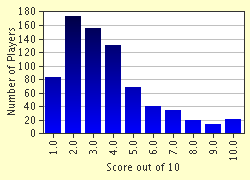Quiz Answer Key and Fun Facts
1. The JU-87 "Stuka" was not a pretty site to look at, all the less so when it was hurtling towards you at an 80 degree angle, but it was not pleasant to hear either. It had a siren on its port landing gear. What was the nickname the crews gave this device?
2. This out-of-date bomber was used for high altitude reconaissance by Germany for a short period of time after the Battle of Britain. Which was it?
3. Germany shortly before WWII is commonly believed to have had little interest in long range heavy bombers, but in fact it had one of the largest supporters of long range bombers from the get-go. Who was he?
4. Many medium bombers that Germany had were converted into night fighters when the need arose. Which of those was unpopular with its crews?
5. The He-177 was a great aircraft when it worked. What was one of the things the RLM (Reichsluftministerie) did that caused the 177 to go from a great bomber to a great disaster?
6. Which one of the three German Battle of Britain bombers could carry the most tonnage, and which could carry the least over a short distance?
7. This is the only bomber in World War II to have a top speed of over 460mph, what was it?
8. The Junkers 287 was the intended replacement for the aging Stuka in 1944. With forward swept wings, two Junkers 003 turbojets and something interesting captured from the Americans, the JU-287 would have been a formidable ground attack/bomber aircraft. What was the American "contribution"?
9. Ground attack was a field of bombers in which the Germans excelled. Convinced that more armour was necessary to protect the pilots of ground attack aircraft Henschel came up with the HS-129, what was its nickname?
10. The Germans had originally decided to build one carrier known as the Graf Zeppelin. What were the two types of aircraft that were designed to be based on the carrier?
Source: Author
experten45
This quiz was reviewed by FunTrivia editor
bloomsby before going online.
Any errors found in FunTrivia content are routinely corrected through our feedback system.


